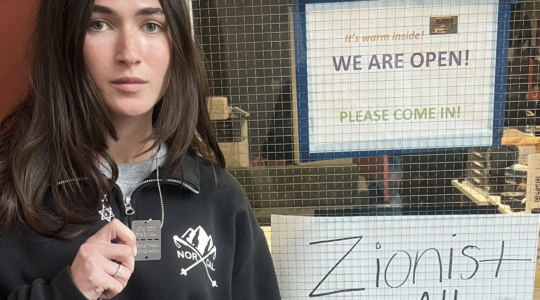Now this is what it means to be free.
In 1977, the Israeli government began airlifting the entire community of Ethiopian Jews, who were facing starvation and governmental anti-Semitism. The exodus officially ended in 1991, when nearly all the Beta Israel, as they’re known, were relocated to Israel.
The new Journey to Freedom Haggadah, a haggadah that “celebrates Ethiopian Jewish culture,” sets up a very direct parallel between the biblical Exodus from Egypt and the modern-day exodus from Ethiopia. It was assembled by Rabbi Menachem Waldmen, a representative of Israel’s Committee on Ethiopian Jewry and a scholar of Ethiopian Jewry.
If you’re looking for Ethiopian Jewish rituals to plug in to your seder, you might be out of luck–mostly it’s a standard haggadah, with the same rituals and seder plate and Four Questions that we’re accustomed to. Some headlines appear in the Beta Israel’s Amharic alphabet, but the rest is written in English and Hebrew.
The real bonus goodies are in the haggadah’s additional information. There’s a description–with pictures!–of the Passover sacrifice, which some Ethiopian Jews continue to perform to this day (other Jews stopped after the Second Temple was destroyed). There are also pictures of Beta Israel baking their own matzah–circular flatbread nearly two feet in diameter, and soft like pita. Sidebars and art tell the story of the Beta Israel’s life in Ethiopia, their modern-day exodus from Ethiopia, and subsequent arrival in Israel.
Which gives the final words of the seder–“Next year in Jerusalem!”–a whole new meaning.
JTA has documented Jewish history in real-time for over a century. Keep our journalism strong by joining us in supporting independent, award-winning reporting.





